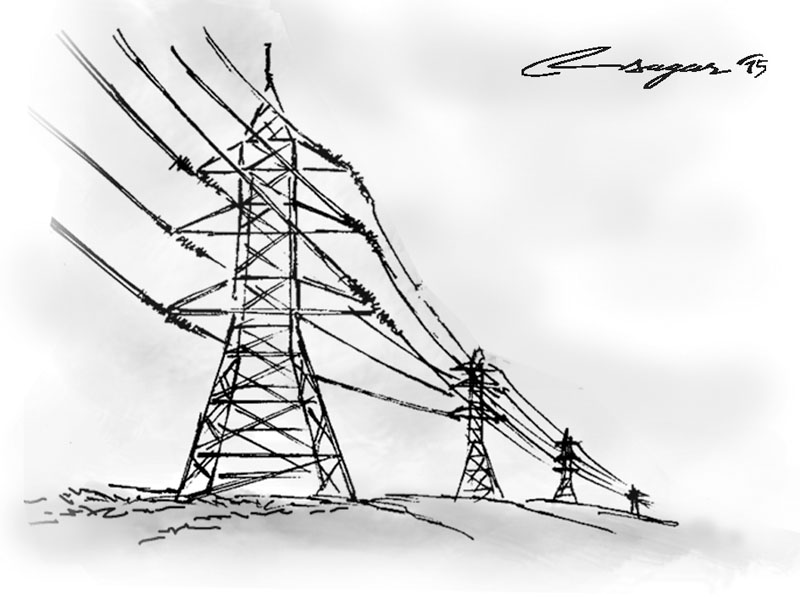Regulatory framework to be prepared soon
Kathmandu, January 29
Nepal and India have agreed to prepare a regulatory framework within next six months to fully begin implementation of bilateral power trade agreement sealed in October 2014.
READ ALSO
The framework will clarify roles, responsibilities and obligations of various players engaged in power trade between the two neighbouring countries and the methodology of buying and selling electricity across the border.
An understanding in this regard was reached during the second meeting of the Joint Steering Committee held here today.
The meeting was headed by Secretary of Nepal’s Ministry of Energy (MoE) Suman Prasad Sharma and Secretary of India’s Ministry of Power (MoP) Pradeep Kumar Pujari.
“We have to work on two things simultaneously to implement Nepal-India power trade agreement,” MoP Secretary Pujari told an interaction held by Nepal-India Chamber of Commerce and Industry here today.
“First is putting regulatory and other frameworks in place. The other is building necessary infrastructure, especially transmission lines for transportation of electricity across Nepal-India border,” Pujari said. “In today’s meeting, we moved quite a bit in attaining both the objectives.”
As per Pujari, teams from both the countries are already working on preparing the draft of the power trade regulatory framework. “The framework should be in place within the next four to six months.”
Similarly, both the countries also agreed to expedite construction of various cross-border transmission lines during today’s meeting.
“Nepal’s priority has to be in construction of cross-border transmission lines because in the short term we have to import electricity from India to reduce load-shedding hours,” Energy Secretary Sharma said.
Nepal currently faces power cuts of over 14 hours per day.
In this regard, Nepal and India have agreed to bring 132kV Kataiya-Kusaha and Raxaul-Parwanipur transmission lines into operation within September 2016.
Although power should have been evacuated from these lines within December 2015, problems in the Indian side delayed the work.
Once these lines come into operation in September, Nepal can import 100MW of power from India. “Once the lines fully come into operation, Nepal can import additional 120MW of electricity from India,” Pujari said.
Also, discussions on expediting construction of three 400kV cross-border transmission lines, namely Butwal-Gorakhpur, Dhalkebar-Muzaffarpur Second Line, Lumki-Bareli, were held during today’s meeting.
Earlier, a Nepal-India technical committee had proposed development of six 400kV cross-border transmission lines for cross-border power trade.
They are: Attariya-Uttarakhand, Lamki-Bareli, Kohalpur-Rupaidiha, Butwal-Gorakhpur, Dhalkebar-Muzaffarpur and Inaruwa-Bihar.
Of these, construction of Butwal-Gorakhpur, Dhalkebar-Muzaffarpur (Second Line), and Lamki-Bareli is scheduled to be completed within 2022.
Development of Butwal-Gorakhpur transmission line will help in export of electricity generated by 600MW Upper Marsyangdi-2 hydroelectric project to India.
Similarly, second Dhalkebar-Muzaffarpur transmission line will help evacuate power generated by 900MW Arun-3 hydroelectric project, while Lamki-Bareli transmission line will help in export of electricity generated by 900MW Upper Karnali hydroelectric project.
Nepal is eyeing generation of 13,700 MW of electricity within 2025 and 44,000 MW of electricity within 2035.
Of this quantum of electricity, 12,000 MW can be exported within 2025 and 24,000 MW can be exported within 2035.
Once Nepal starts generating surplus electricity, it can be exported to India and beyond, as the southern neighbour is currently preparing a policy to enable power trade in South Asian region.
The policy is expected to be finalised within the next six to eight months.
“India is keen to purchase electricity from Nepal as we have adopted a policy of reducing our dependency on coal for power generation.
For this, we must diversify into hydro and other renewable sources,” Pujari said. “So, both countries can work together for the benefit of each other.”
India currently generates 84 per cent of electricity through thermal sources coal, gas and petroleum products but largely coal.
Coal is one of the biggest sources of carbon emission in India.





